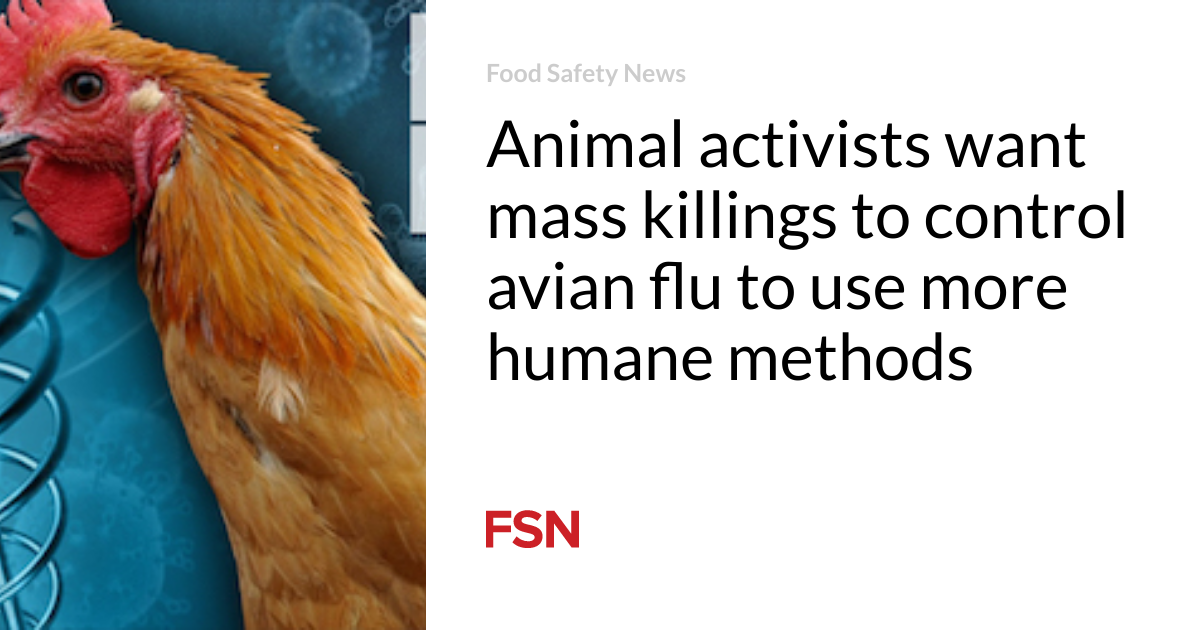Mass killings to control highly contagious, highly pathogenic avian influenza are being criticized by at least one animal activist organization.
The non-governmental Animal Welfare Institute (AWI) has petitioned the USDA’s Animal and Plant Inspection Service (APHIS), asking the government to “incentivize producers to adequately plan for the rapid killing of infected and exposed animals.”
The AWI’s petition references the 2018 APHIS rule that requires producers to have an approved biosecurity plan that is audited at least every two years in order to be eligible for avian flu claims. Biosecurity plans are seen as critical to protecting flocks and reducing the risk of disease.
The petition, however, calls for more producer “incentives” before USDA could pay claims for the loss of a flock due to an avian flu outbreak.
“The ongoing HPAI outbreak has been an animal welfare nightmare that has caused untold suffering not only for the birds who are actually infected but for potentially healthy birds as well,” said Dena Jones, AWI’s farmed animal program director. “Unfortunately, if one infection is confirmed, every single bird at the location must be killed — even if that means killing millions of potentially uninfected birds.”
The petition claims more humane methods can be used for the mass killings.
The AWI reports that one controversial method used to kill large numbers of birds during the current outbreak is “ventilation shutdown plus” (VSD+). VSD+ involves turning off the airflow in a barn and ratcheting up the heat to above 104 degrees, leaving trapped birds to die from heat stroke over several hours.
It says VSD+ likely causes extreme suffering, and 3,500 veterinary professionals have gone on record to oppose its use. Nevertheless, according to an AWI analysis of USDA records, between February 2022 and March 2023, at least 44.9 million birds — nearly 77 percent of the commercial birds impacted in the United States — were killed in depopulations using VSD+ alone or in combination with other methods.
By comparison, the primary depopulation methods used during the 2014-2015 HPAI outbreak — considered at the time to be the largest and most serious animal health disease incident in U.S. history — were water-based foam and carbon dioxide (CO2) gassing.
After the USDA noticed depopulation delays during that outbreak, particularly on layer operations with hundreds of thousands or millions of birds, the department established a policy that depopulations must occur within 24 to 48 hours of avian flu being detected. Further, the department sanctioned the use of VSD+, essentially as a method of last resort to be used only when AWI claims other, more humane alternatives are not available.
The Animal Health Protection Act authorizes the USDA to order the depopulation (mass killing) of domestic bird flocks or other farmed animals to combat the spread of disease. Following disease outbreaks in poultry, the department also has the power to indemnify producers for the loss of birds and eggs, as well as certain costs associated with depopulation, disposal, and other virus-elimination activities.
For the past 16 months, the United States and countries around the world have been grappling with a highly pathogenic avian influenza (HPAI) outbreak of unprecedented scale. Research indicates that the disease is becoming enzootic (established) in wild bird populations in Europe and may soon become similarly entrenched in North America.
Clearly, HPAI is not going away. By February 2023, the U.S. government had spent an estimated $661 million in HPAI response activities and indemnity payments, with no end in sight. During the 2014-2015 outbreak, the USDA spent an estimated $950 million on HPAI response and preparedness activities and indemnity payments.
As of June 15, HPAI has been confirmed in 325 commercial and 511 backyard flocks in 47 states, resulting in the depopulation of nearly 59 million domestic birds. The three states with the highest number of birds affected by the ongoing outbreak are Iowa (over 15.9 million), Nebraska (over 6.7 million), and Colorado (over 6.2 million).
Even with the recent widespread use of VSD+, the USDA’s depopulation timeline has not been met in a majority of cases involving large flocks (at least 100,000 birds), according to AWI’s analysis. Of the 37 depopulation events of large flocks that involved VSD+, nearly two-thirds took at least three days to complete. In the most extreme cases, in which at least 1 million birds were involved, depopulation took more than two weeks.
“Clearly, the size of an operation creates logistical challenges for performing depopulation in a timely manner, specifically within the USDA’s goal of 24-48 hours. These challenges are undoubtedly exacerbated by a lack of preparedness,” AWI wrote. “Because the USDA has declined to limit the size of operations, the only way to better ensure that depopulation can be carried out pursuant to USDA’s goal of 24-48 hours is to incentivize better preparation.”
According to AWI, other countries around the world hit hard by HPAI — including Canada, the United Kingdom, and much of the European Union — have avoided using depopulation methods that rely on heat stroke, and since the 2014-2015 outbreak, numerous depopulation methods considered more humane have become available.
The AWI petition asks APHIS to exercise its authority to require audited emergency action plans that prioritize the use of more humane methods of depopulation as a condition for HPAI-related payments. These plans should include detailed descriptions of procedures to
· Depopulate flocks within 24 to 48 hours in a manner that rapidly renders individual animals unconscious
· Avoid the use of methods such as VSD+ and others categorized by the American Veterinary Medical Association as “permitted under constrained circumstances”
· Minimize pain and distress from catching, handling, and confining birds during depopulation
(To sign up for a free subscription to Food Safety News, click here.)
